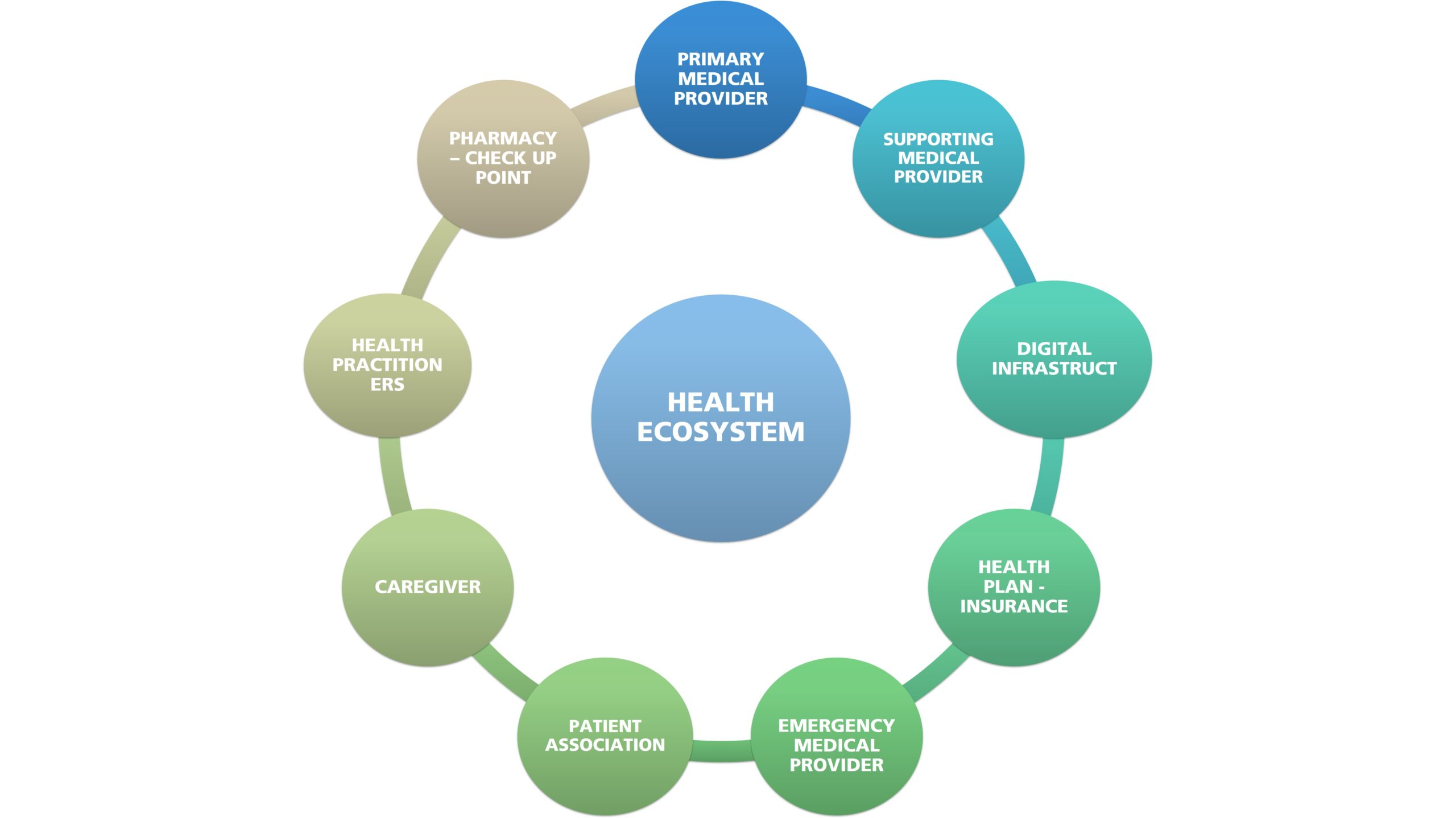Overview of health ecosystems and digital health services
A health ecosystem is comprised of services and products aimed at the achievement of positive outcomes for the customers or patients in terms of better quality of life or to recover from any disease conditions. Services and products are offered by an ecosystem of partners which complement each other in offering a customer experience as complete as possible.
Its underlying concept is that the customer – or the patient, depending on the case – can find whatever he/she needs “under the same roof”, without juggling through different providers.
It is important to set the rules of an ecosystem, starting from defining which actor drives it. Indeed, there are many candidates to assume this role. Recently, some of the insurance companies have started to work in conjunction with pharmaceutical companies and technology providers to design new digital health ecosystems.
According to a Roland Berger research on the future of health, customers prefer Big Techs (e.g. Google, Facebook) or digital health startups to drive their prevention and wellbeing behaviors. Healthcare providers, however, are the preferred partner to lead their health path when it comes to recovering from a disease.
Big Techs and digital health startups are on the right track to create “consumer health” ecosystems since they can harness the huge amount of behavioral data at their disposal.
However, it is not so easy to create a “specific disease” ecosystem since such solution requires flawless design and implementation, tied to the basic principle of personalized care.
If the services comprising an ecosystem are purchased and provided digitally, we can call it a digital health ecosystem. It may offer both completely digital services and ’online to offline’ services, that means purchased digitally and delivered physically because they require a physical point of contact.
There are different ways to organize an ecosystem. One consists of using a digital platform in which embedded engines orchestrate the various players. In this case, the ecosystem runs on a technology platform that acts as a digital backbone, providing interconnectivity among provider systems, physicians, payers, patients, and other healthcare players.
According to the HIMSS digital health framework, there are four dimensions to consider when evaluating the maturity of a digital health ecosystem:
- infrastructure and data interoperability – consisting of the seamless flow of data among users and clinicians to ensure data access is easily accessible
- governance and workforce – ensures the policy and regulatory environment of health systems’ privacy, security, stewardship and accountability
- predictive analytics capability- the transformation of data into knowledge and real-world insights that inform decisions for individuals, health teams, and health system leaders
- person-enabled care – how the system help users track progresses and outcomes toward defined personalized goals by continuously engaging them
A health ecosystem may involve various players, each one playing a precise role: medical providers, pharmacies, caregivers, health practitioners, insurance companies, technology providers, patient associations or patient leaders, etc.

Various services can be potentially included in an ecosystem. Based on my research findings, they fall into four categories:
- PREVENTION: services aimed at preventing lifestyle-related diseases. The customer is regularly encouraged to fix bad habits through health education content, health risk measurements, or health data tracking systems. These services also include physical check-ups in order to detect health problems early.
- CARE & FOLLOW-UP: services ensuring access to care, the care itself, ongoing monitoring, and active patient involvement. The goal is to restore good health.
- PROTECTION: services aimed at protecting the client against financial difficulties caused by an illness. They are typically referred to as insurance services or consulting services.
- OTHER SPECIFIC SERVICES: services enabling the access and consumption of care or additional services that bring value to customers or patients.

There are already companies/startups offering single services, but we can also find more complex solutions such as digital platforms that integrate some of the above-mentioned categories.
If you would like to discover more about this topic, feel free to drop me a message on my LinkedIn profile or at ffalivelli@digitalhelpscare.com.
Sources and references
Roland-Berger_Future-of-Health-2.pdf
